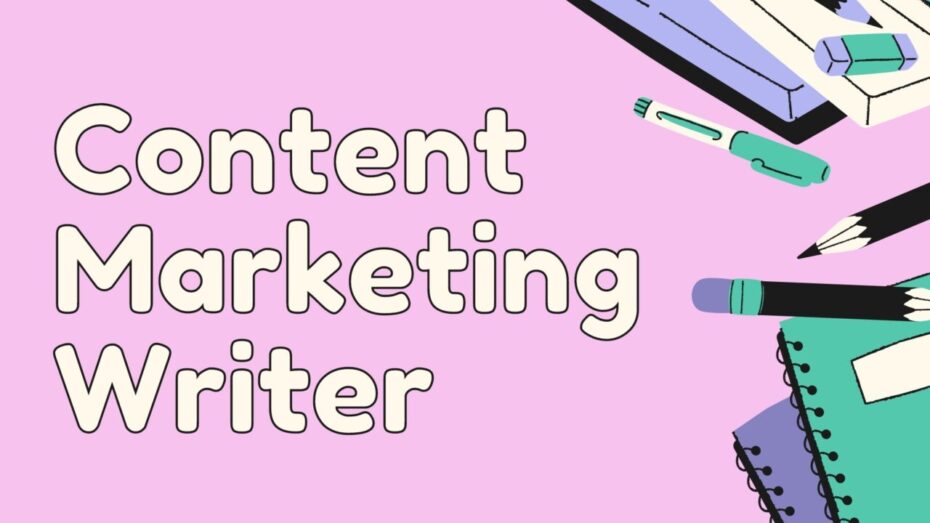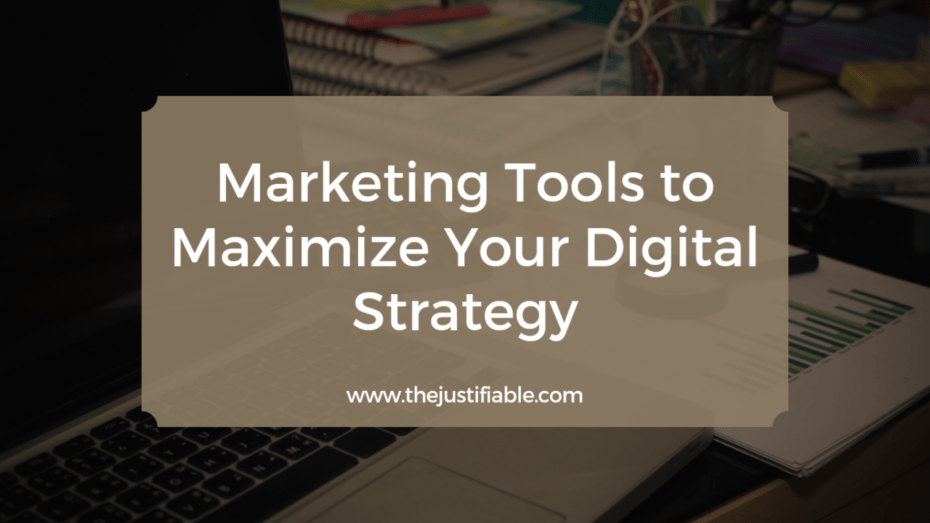Disclosure: This post contains affiliate links, which means that if you click on them and make a purchase, I will receive a commission. Read our Disclaimer for More.
Marketing Materials!
In the dynamic world of business, companies have to continually find ways to connect with their audiences. This is where marketing materials come into play. They are crucial in communicating a business’s value proposition, highlighting its uniqueness, and enticing customers to engage and ultimately, convert.
Understanding the Concept of Marketing Materials
Marketing materials are a collection of print and digital resources used by businesses to reach, engage, and convert their audience. They encompass an extensive range of tools – from traditional items like business cards, brochures, and banners, to digital assets like websites, social media posts, and email newsletters.
The essence of these materials lies in their ability to communicate a company’s products or services and position them effectively in the customer’s mind. They serve as a bridge connecting businesses to their target audiences, building awareness, and nurturing relationships.
Marketing materials aren’t just about promoting products or services, though. They’re about telling a story – your business’s story. They should provide a consistent image of your brand, communicate your brand values, and establish trust and credibility in the market. When designed effectively, these resources can become a significant driving force behind your business’s success.
Importance of Effective Marketing Materials in Business
In the realm of business, effective marketing materials can play a transformative role. They not only serve to create a strong first impression but also foster sustained engagement with potential customers. Let’s take a closer look at why these assets are so crucial.
Firstly, marketing materials can help amplify a brand’s visibility. By providing essential information about a company’s offerings in a visually appealing and easily digestible format, they capture attention and spark interest.
Secondly, they support the conversion process. A well-crafted brochure or an engaging website can guide potential customers through the decision-making journey, compelling them to take action – be it making a purchase, signing up for a newsletter, or reaching out for more information.
Moreover, effective marketing materials foster brand consistency. Consistent messaging across all platforms and materials strengthens your brand identity, builds trust, and enhances customer loyalty.
Lastly, they facilitate business growth. By amplifying your brand, supporting conversions, and fostering loyalty, high-quality marketing materials can lead to increased sales, customer retention, and long-term business success.
The Key Elements of High-Converting Marketing Materials
For marketing materials to be truly effective, they need to not only capture the audience’s attention but also inspire them to take the desired action.
This could be making a purchase, signing up for a newsletter, or downloading a resource. Let’s delve into the key elements that can transform ordinary marketing materials into high-converting ones.
Clarity and Precision
Clarity and precision are the cornerstones of any effective marketing material. The audience should be able to quickly understand what the material is about and what action is expected from them. This includes clearly stating what the product or service is, how it benefits the user, and how they can access it.
Remember, people are busy and often skim through marketing materials. By keeping the messaging clear and precise, you increase the chances of your marketing message being understood and acted upon. Remove any fluff or jargon that could confuse your audience. Prioritize simplicity and brevity without compromising on necessary details.
Unique Selling Proposition (USP)
A Unique Selling Proposition (USP) sets your business apart from competitors. It’s that distinctive factor that makes your product or service stand out in the crowd of similar offerings. Your USP should be a strong, clear statement that is both compelling and easily understood.
Highlighting your USP in your marketing materials can provide potential customers with a strong reason to choose your business over others. Whether it’s unrivaled quality, innovative features, exceptional service, or great value for money, your USP should resonate with your target audience and influence their purchasing decision.
Aesthetically Pleasing Design
Good design is a powerful persuasion tool. An aesthetically pleasing design can draw people in, keep them engaged, and help them process the information you’re providing. This includes the use of colors, typography, images, and layout.
Every element of your design should align with your brand and the message you want to convey. It should also cater to your target audience’s preferences. For instance, a youth-focused product may benefit from a vibrant, energetic design, while a luxury brand may prefer a more refined, minimalist look.
Consistent Branding
Consistency in branding is essential in building brand recognition and trust. This means maintaining a uniform look and feel across all your marketing materials. Your logo, color scheme, typography, and messaging should reflect your brand identity consistently.
Consistent branding helps your audience instantly recognize your materials, irrespective of the platform or format. It also reinforces your brand identity and values, making your business more memorable in the minds of your customers.
Call to Action (CTA)
The Call to Action (CTA) is arguably one of the most critical components of your marketing materials. It guides your audience on what they should do next. Whether you want them to purchase a product, sign up for a service, download a guide, or contact your sales team, your CTA should be clear, compelling, and easy to follow.
To increase conversions, place the CTA prominently in your marketing materials and use action-driven language that incites urgency and excitement. Remember, the goal is to guide your audience towards a specific action that aligns with your business objectives.
Types of Marketing Materials and Their Role in Conversion
In the broad spectrum of marketing, the materials a business chooses to utilize can significantly influence its ability to attract, engage, and convert potential customers. Let’s break down two main categories of marketing materials – traditional and digital – and explore their role in customer conversion.
Traditional Marketing Materials – Brochures, Flyers, Posters
Traditional marketing materials, such as brochures, flyers, and posters, have stood the test of time for a reason. They are tangible, accessible, and can reach a wide audience, including those who may not be active online.
Brochures are versatile marketing tools that can be used to provide detailed information about your products or services. They can effectively showcase the benefits and features of your offering, helping to convince potential customers of its value.
Flyers, on the other hand, are excellent for promoting events, sales, or new product launches. They’re designed for wide distribution, enabling businesses to reach a larger audience.
Posters serve a similar purpose but are typically placed in high-traffic areas to capture attention and spark interest among a large number of people.
Despite the rise of digital media, these traditional marketing materials still hold significant value in a comprehensive marketing strategy, offering a tactile experience that can leave a lasting impression.
Digital Marketing Materials – Emails, Websites, Social Media Posts
In the digital age, marketing materials have evolved to include emails, websites, and social media posts. These tools offer businesses the chance to reach their audience right where they spend most of their time: online.
Email marketing remains one of the most effective digital marketing tools. It allows businesses to send personalized messages directly to their target audience, improving engagement and conversion rates.
Websites serve as a digital storefront for businesses. They provide a platform to showcase products or services, share company news, and offer customer support. A well-designed website can significantly boost a business’s credibility and conversions.
Social media posts, on the other hand, offer an excellent platform for brands to engage with their audience on a more personal level. They can be used to share updates, promote products or services, and interact with customers.
The Role of these Marketing Materials in Customer Conversion
Both traditional and digital marketing materials play a crucial role in customer conversion. They’re designed to create awareness, generate interest, and incite action.
Traditional marketing materials like brochures, flyers, and posters can reach a broad audience and provide tangible information that potential customers can refer back to. They help reinforce your brand and create a visual impact, aiding in customer recall and, eventually, conversions.
Digital marketing materials, such as emails, websites, and social media posts, allow businesses to reach customers in real-time, providing immediate value and fostering engagement. They offer the flexibility of instant updates, personalization, and interactive features that not only drive awareness and interest but can also directly lead to conversions.
Best Practices for Creating Effective Marketing Materials
Creating effective marketing materials is no easy task, but by following some best practices, businesses can enhance their chances of resonating with their audience and driving conversions. Let’s delve into some key strategies that can optimize your marketing materials.
Understanding Your Target Audience
The first step in creating compelling marketing materials is to understand your target audience thoroughly. Knowing who you’re speaking to helps tailor your messaging, design, and marketing channels to fit their preferences, needs, and behaviors.
Consider demographics such as age, gender, location, and income, but also delve into psychographics like interests, attitudes, and behaviors. What problems are they facing that your product or service can solve? What motivates them? What channels do they use most often?
By answering these questions, you can create marketing materials that resonate with your audience and compel them to take action.
Creating Engaging Content
Content is king, and this couldn’t be more true when it comes to marketing materials. Your content should be engaging, informative, and valuable to your audience. It’s not just about promoting your product or service, but also about providing something of value to your audience.
Whether it’s helpful tips, industry insights, or how your product solves a problem, your content should grab your audience’s attention and keep them engaged. Be mindful of your tone of voice, ensuring it aligns with your brand and resonates with your audience.
Incorporating Appealing Visuals
Visuals play a crucial role in the effectiveness of your marketing materials. They grab attention, aid comprehension, and influence emotions. Incorporate visuals like images, infographics, videos, or illustrations to break up text, convey complex information, and enhance your storytelling.
Ensure your visuals align with your brand aesthetics and effectively communicate your message. They should be high-quality and relevant to the content, adding value rather than serving merely as decoration.
Using Action-Driven Language
To convert your audience, your marketing materials must inspire action. Use action-driven language to guide your audience towards the next steps. This could be as direct as “Buy Now” or “Sign Up Today,” or more subtle like “Learn More” or “Discover Why.”
A well-crafted call-to-action (CTA) can significantly increase conversions. It should be clear, compelling, and prominently placed in your marketing materials. Using urgency in your CTAs, such as “Limited Time Offer” or “While Supplies Last,” can also drive immediate responses.
Measuring and Improving Performance
Last but not least, always measure the performance of your marketing materials and look for ways to improve. Use metrics like engagement rates, click-through rates, or conversion rates to gauge the effectiveness of your materials.
Try different versions of your content, visuals, or CTAs to see what resonates most with your audience. Use the insights gained from tracking and analyzing these metrics to refine your materials and make them more effective.
Case Study: Successful Marketing Materials and Their Impact on Conversions
The power of effective marketing materials can be truly appreciated when looking at real-life success stories. The following case studies will explore how a well-designed website and engaging email campaigns can significantly boost conversions.
Case Study 1: Impact of a Well-Designed Website
Let’s consider the case of a mid-sized online clothing retailer, “Fashion Forward“. In an increasingly digital world, they understood the importance of their website as a primary marketing material and decided to revamp it.
The previous website had a cluttered layout, slow load times, and was not mobile-friendly. This made navigation difficult, negatively impacting user experience and, in turn, conversions.
In revamping their website, Fashion Forward focused on simplifying the layout, improving load times, making it mobile-friendly, and incorporating more visually appealing product images. They also streamlined the checkout process to make transactions smoother for customers.
Post-implementation, Fashion Forward saw a remarkable improvement. Their website bounce rate decreased by 35%, time spent on the site increased by 20%, and most importantly, they observed a significant 40% increase in their conversion rate. This case study demonstrates the profound impact a well-designed website can have on customer engagement and conversion rates.
Case Study 2: The Power of Engaging Email Campaigns
Next, let’s examine the case of “Healthy Habits“, a fitness and wellness app. As part of their marketing strategy, they regularly send out email newsletters with health tips, workout plans, and premium feature promotions.
However, they were noticing a stagnation in their email open and click-through rates, which were affecting app downloads and premium subscriptions.
Healthy Habits decided to revamp their email campaigns. They focused on personalization, segmenting their subscribers based on their fitness goals and engagement with the app. They started sending targeted emails with personalized health tips and workout plans, along with enticing promotions for their premium features.
The results were astounding. Their email open rate improved by 50%, and the click-through rate increased by 30%. More importantly, the download rate for their app and subscription to their premium features saw a substantial increase of 60%.
This case study highlights the power of engaging, personalized email campaigns in driving conversions and achieving business objectives.
Overcoming Common Challenges in Developing Marketing Materials
The development of effective marketing materials is a critical part of any business’s marketing strategy. However, several common challenges can complicate this process. Let’s discuss these challenges, including budget constraints, keeping up with market trends, and differentiating from competitors, and provide some insights on how to overcome them.
Budget Constraints
For many businesses, especially smaller ones or start-ups, budget constraints can pose a significant challenge when developing marketing materials. High-quality content, professional designs, and efficient distribution often come with a cost. However, there are several ways to navigate these constraints.
Firstly, it’s crucial to prioritize and invest in the most impactful marketing materials for your specific business. Depending on your target audience, this might mean focusing on a top-notch website or an engaging email marketing campaign.
Secondly, consider leveraging cost-effective tools and platforms for design and content creation. Numerous online tools offer professional templates and resources to help you create high-quality marketing materials without breaking the bank.
Lastly, remember that marketing is an investment. Measure the return on investment (ROI) of your marketing materials, and make budget decisions based on what delivers the best value for your business.
Keeping Up With Market Trends
In the fast-paced marketing landscape, keeping up with the latest trends can be challenging. However, staying current is crucial to ensure your marketing materials remain relevant and effective.
Continually monitor industry trends and consumer behaviors. Make use of online resources, attend webinars and industry events, and follow thought leaders in your industry to stay informed.
Also, keep an eye on new technological developments. Advances in areas like AI, machine learning, and data analytics are continually changing the marketing game, offering new ways to target audiences, personalize content, and measure effectiveness.
Differentiating from Competitors
In a crowded marketplace, standing out from the competition is a significant challenge. Your marketing materials shouldn’t just be well-crafted; they also need to highlight what makes your brand unique.
To overcome this challenge, focus on your unique selling proposition (USP). What sets your products or services apart from the competition? Why should customers choose you over others? Ensure your marketing materials communicate this clearly.
Additionally, consider your brand voice and identity. Consistent and distinctive branding can help your business stand out in your audience’s minds, enhancing recognition and recall.
Conclusion: Leveraging Marketing Materials for Higher Conversion Rates
In the dynamic and competitive business landscape, effectively leveraging marketing materials can make the difference between merely reaching your audience and converting them into loyal customers.
The Future of Marketing Materials in Conversion
The future of marketing materials promises to be more digital, personalized, and data-driven. As technology continues to advance, businesses will be equipped with even more tools to create engaging, targeted marketing materials. We can expect to see increased use of AI and machine learning in creating personalized content, predictive analytics in determining marketing strategies, and augmented and virtual reality in providing immersive experiences.
While new trends and technologies will continue to emerge, the fundamental goal remains the same: creating marketing materials that resonate with your audience and inspire action. As such, keeping up with trends while staying true to your brand and audience will be key in leveraging marketing materials for higher conversion rates.
Recap of Best Practices for Marketing Materials
To recap, effective marketing materials require an understanding of your target audience, engaging and value-driven content, appealing and consistent visual design, action-driven language, and continuous performance tracking and improvement. Overcoming common challenges such as budget constraints, keeping up with market trends, and differentiating from competitors is also critical.
Through strategic planning, creativity, and consistent effort, businesses can create marketing materials that not only reach their audience but also inspire action, leading to higher conversion rates and business success.






